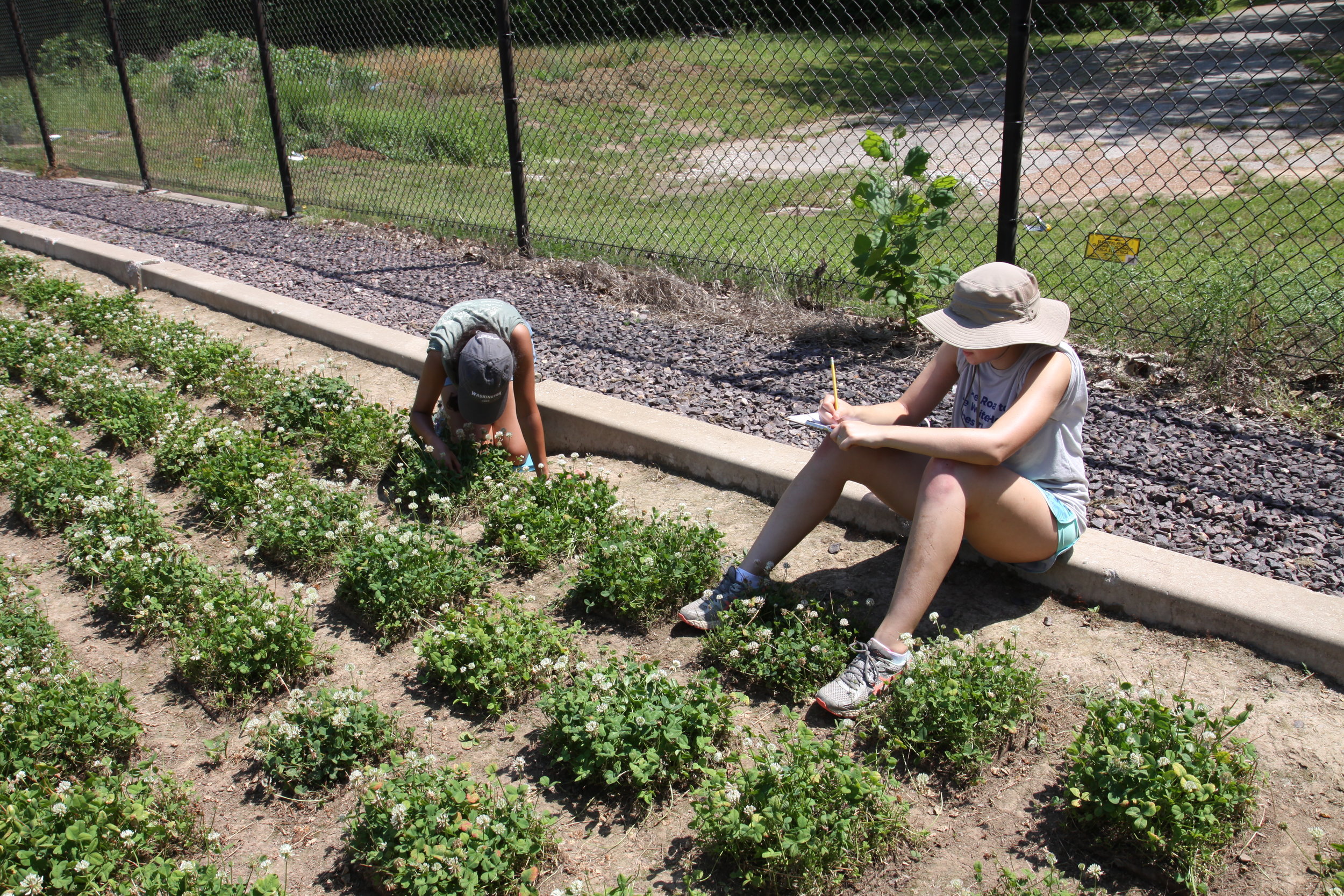Sara Wright, Kenneth Olsen
Climate-associated clines in adaptive polymorphisms are commonly cited as evidence of local adaptation within species. However, the contribution of the clinally varying trait to overall fitness is often unknown. To address this question, PhD student Sara Wright performed two white clover common garden experiments in the research garden at Tyson Research Center. By first measuring fitness traits of individuals from 15 widespread North American populations in 2015, she documented evidence of home-site fitness advantage and local adaptation to climate in the species (Wright et al. 2017). From 2016-2018, she then measured fitness variation in F2 plants from a genetic mapping population, allowing her to identify regions of the white clover genome that contribute to high fitness. This genetic mapping project included replicate gardens in Duluth, MN and Gainesville, FL, with the goals of 1) describing the genetic architecture of local adaptation to different climates and 2) quantifying the fitness impacts of a chemical defense polymorphism (cyanogenesis) across a latitudinal gradient.



